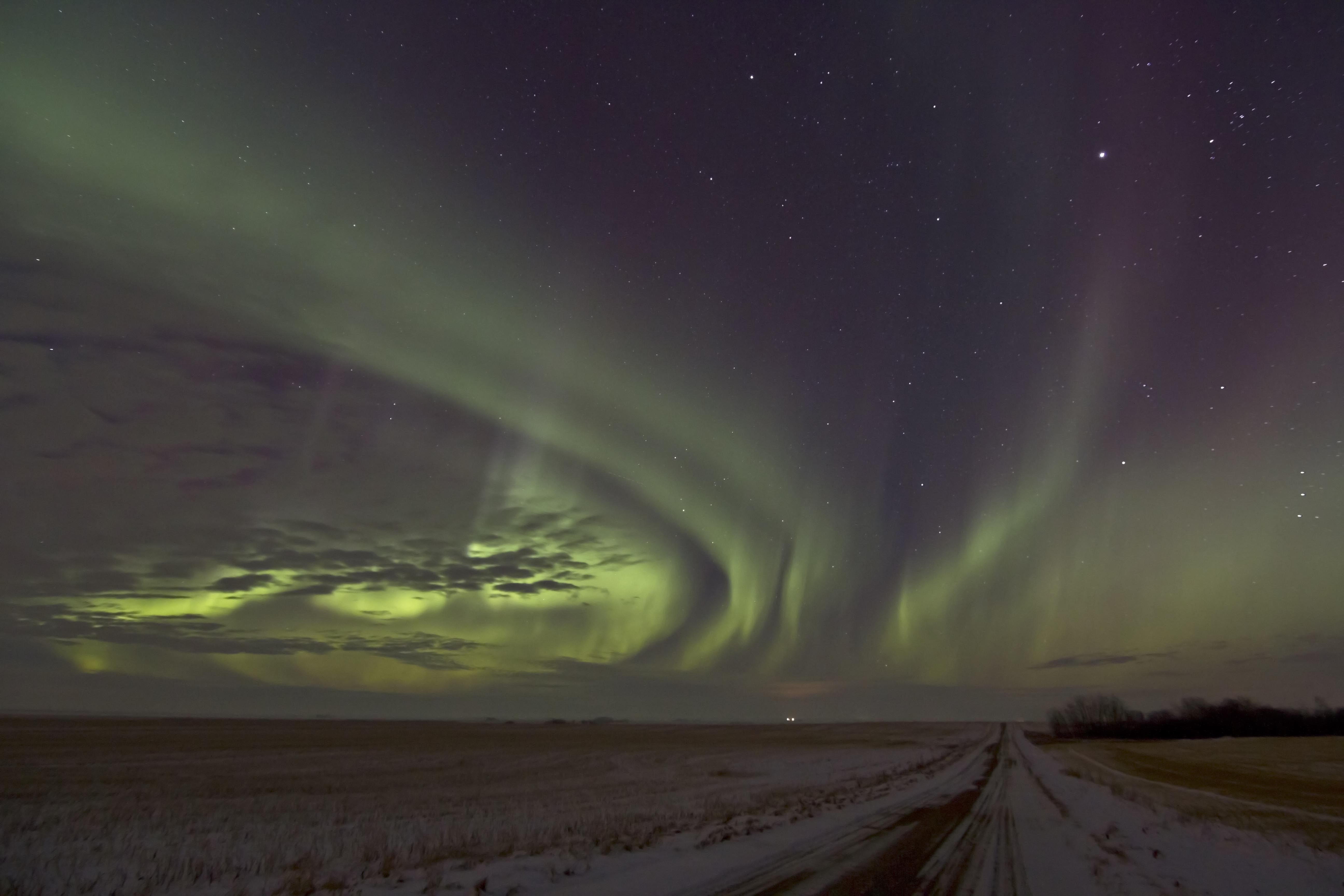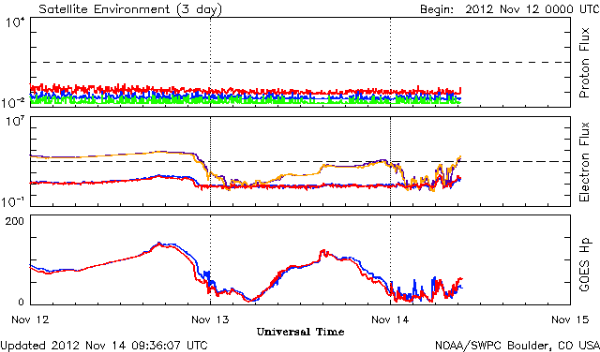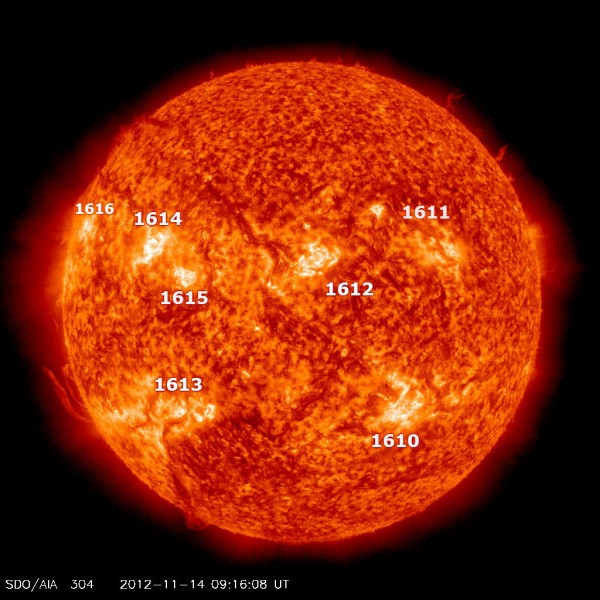Geomagnetic storm in progress (November 14, 2012)

Geomagnetic storm conditions are currently in progress in the wake of CME passage. A prolonged period of southward interplanetary magnetic field brought G2 (Moderate) Geomagnetic Storm conditions early on November 14 (UTC), evening hours November 13 (EST) according to report by NOAA/SWPC. G2 level conditions can cause power grid fluctuations and voltage alarms at high-latitude power systems, and even transformer damage in case of long-duration storms. Corrective actions to orientation for spacecrafts may be required by ground control and possible changes in drag can affect orbit predictions. HF radio propagation can fade at higher latitudes, and aurora could be seen as low as New York and Idaho. Planetary K index reached Kp=6 levels (G2) and now is showing Kp=5 value (G1).

Space Weather Message Code: ALTK06
Serial Number: 300
Issue Time: 2012 Nov 14 0600 UTC
ALERT: Geomagnetic K-index of 6
Threshold Reached: 2012 Nov 14 0600 UTC
Synoptic Period: 0300-0600 UTC
Active Warning: Yes
NOAA Scale: G2 – Moderate
This conditions may persist for a few more hours. Currently, geomagnetic storm conditions are at G1 (Minor) levelwhich can cause weak power grid fluctuations and minor impact on satellite operations. Migratory animals are affected at this and higher levels and aurora is commonly visible at high latitudes. The Bz component turned negative around 23:00 UTC on November 13, and has since had values between -10 and -20 nT. Protons have a slight chance of reaching alert threshold for the next 48 hours.
 Current extent and position of the Auroral Oval at the north and south pole. (POES Aurora)
Current extent and position of the Auroral Oval at the north and south pole. (POES Aurora) Quiet to unsettled levels are expected today and tomorrow due to effects from a negative polarity coronal hole high-speed stream. On November 16 conditions are expected to return to mostly quiet levels.

Solar activity has been at high levels for the past 24 hours. Sunspot 1613, located in the southeast quadrant, has developed a Delta magnetic configuration and produced multiple M-class flares with associated CMEs. Three M-Class solar flares were observed in the last 36 hours, with largest registered as M6.0 at 02:04 UTC. At the moment, at least two minor CMEs are visible in Lasco C2 imagery. Luckily, it appears they’re directed to the south and east and not towards Earth.

Sunspots 1613 and 1614 are closely monitored for further flare activity. Region 1613 now has two small delta configurations with strong magnetic gradients. The region is bright in H-alpha and further growth seems likely. Regions 1610 and 1611 have Beta Gamma magnetic configurations. NOAA/SWPC forecasters estimate 65% chance of M-class and 15% chance of X-class solar flare in the next 24 hours.
 Visible sunspots on SDO’s AIA 304 image
Visible sunspots on SDO’s AIA 304 image CURRENT CONDITIONS:
Solar wind
speed: 413.4 km/sec
density: 4.3 protons/cm3
The Radio Sun
10.7 cm flux: 144 sfu
Planetary K-index
Now: Kp= 5 storm
24-hr max: Kp= 6 storm
Interplanetary Mag. Field
Btotal: 8.9 nT
Bz: 6.4 nT south
Featured image: Aurora display seen on November 13, 2012 over Saskatoon, Saskatchewan, Canada (Credit: Ray Mckenzie via SpaceWeather Aurora Gallery)

Commenting rules and guidelines
We value the thoughts and opinions of our readers and welcome healthy discussions on our website. In order to maintain a respectful and positive community, we ask that all commenters follow these rules:
We reserve the right to remove any comments that violate these rules. By commenting on our website, you agree to abide by these guidelines. Thank you for helping to create a positive and welcoming environment for all.